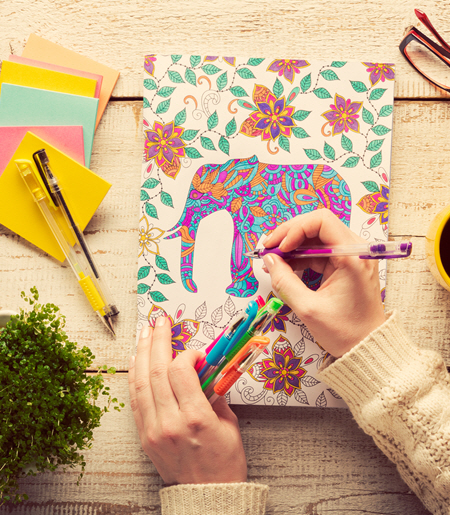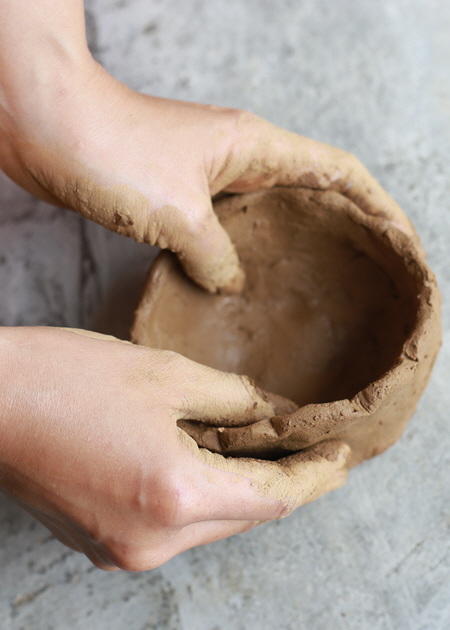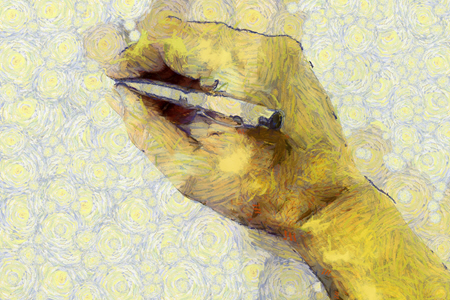 I LOVE using elements of art in therapy sessions.
I LOVE using elements of art in therapy sessions.
Art can break through barriers. Painting can reduce stress; drawing and doodling can help a person communicate easier.
Coloring can break the ice while we get to know each other.
Molding clay can reduce stress.
Collages can promote self-identity and expression.
It is not about the art piece; it is about the movement that happens unconsciously. The art always ends up beautiful because of, and despite, this! I can’t count how many times I have said to clients, “There is no such thing as bad art.”
Although many have disagreed at first, they understood after a completed project. Growth emerges as a client provides some interpretation of their finished piece.
 Therapeutic art for individuals…
Therapeutic art for individuals…
I have used art with individuals for grief, self-esteem, emotional regulation, and relaxation work.
Creating or even viewing art can help clients explore emotions, cope with stress, increase their self-esteem, develop self-awareness and personal growth.
Therapeutic art can help clients gain insight and learn new coping skills. For instance, constructing a memory box that holds memories of a loved one can effectively help one grieve. Art in various forms can increase mental well-being.
As clients create art, they can focus on their perceptions, imagination, and feelings. I encourage them to analyze what they have made and how it makes them feel. As we explore their art, we can notice themes affecting their thoughts, emotions, and behaviors.
Therapeutic art is about letting clients focus on their inner experience, not about making a painting or piece that impresses those around them. This is the reason I tell clients there is no such thing as bad art! It is not about the art, but an expression of what is going on in their inner world.
Therapeutic art for groups…
Groups may have a specific topic such as self-esteem, grief, or anger management. But I like the broader “emotional regulation” groups in which each member might deal with a different emotion. In these groups, clients make connections with others through their interpretation of their piece and the ability to respond to others’ interpretations. Even if they attend the group for different reasons, they can relate emotionally to other group members. I especially like using art as group therapy because of this connection.
In a group setting therapeutic art, the group may be just one session or a series of weeks. Groups will have introductions, a relaxation element, discussion, and an art activity.
In a therapeutic art group setting, there will be introductions. Each session will start with relaxation techniques that include a low-lit room, stretching, deep breathing, and a brief guided meditation. This serves to help in clearing our minds of the day’s stress. This will also slow us down and allow us to connect to our inner creativity.
After this, I will guide an open discussion, giving each participant a chance to talk briefly about why they’re here and what they want to learn about themselves. Then we work on art.
We may paint a picture with waves, while moving like the waves, to feel that relaxation. We might make a memory box with paints or markers for sentimental objects of significance for a grief group. Using messy oil pastels can create meaningful abstract art representative of the participants’ emotions. Collages using mixed media are also powerful.
Depending on the group’s nature, we may listen to some meditational sounds while doing art or a group discussion. After the art piece is complete, it is beneficial for the participants to comment on or interpret their piece aloud in the group. Clients will then take it home with them to reflect upon it further. Maybe it even has a place on their wall.
 Are you ready to paint a new picture of your life?
Are you ready to paint a new picture of your life?
If you are looking for a way to ease into therapy, create a new you, or simply try a new way to relax, it is a great time to give me a call at
(941) 404-5922.
You will receive a free 15-minute consultation during this call, or we’ll schedule a time more convenient for you.
If you are interested in participating in a therapeutic art group, I will let you know when the next group will be and put your name on the list.

